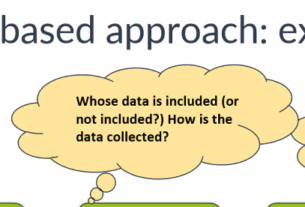It’s difficult to say for certain what the latest tech trends for 2023 will be as the future is always subject to change, however some general tech trends that are likely to continue gaining momentum in the coming years include:
- Increased use of Artificial Intelligence (AI) and Machine Learning (ML) across industries.
- The growing prevalence of the Internet of Things (IoT) as more devices are connected to the internet.
- The ongoing shift towards cloud computing as more companies move their data and services to the cloud.
- Virtual and Augmented Reality (VR/AR) becoming more mainstream, with new applications in gaming, education, and remote work.
- Blockchain technology, which has the potential to disrupt industries such as supply chain, finance, and healthcare.
- Quantum computing, which is expected to bring new capabilities to solve complex problems across various industries.
- Edge computing, which will move computational power closer to the data source and reduce the need for cloud computing.
- The growth of conversational interfaces, such as voice assistants and chatbots, making interactions with technology more human-like.
- Nanobots: The development of nanobots is still in its early stages, and there are many technical challenges that need to be overcome before they can be used in practical applications. Some researchers are also concerned about the potential risks of nanobots, such as their potential to cause unintended harm to people or the environment. It is also important to note that the term “nanobots” is often used to describe a wide range of technologies that are still in the research phase. Some of these technologies might not be feasible in the future, and it will take more research to understand their capabilities and limitations.
- Increase in the use of cyber-physical systems (CPS) are systems that integrate computation, networking, and physical processes. They use sensors and actuators to interact with the physical world, and use the information gathered by these sensors to make decisions and control the actuators. [Example self-driving cars, smart buildings, and industrial control systems.]
- The increase in Embodied AI: this refers to artificial intelligence systems that are integrated into physical bodies, such as robots or drones. These systems use sensors and actuators to interact with the environment, and use AI algorithms to process the information gathered by the sensors and make decisions about how to control the actuators. The physical embodiment of the AI system allows it to perform tasks and make observations in the physical world. This is different from traditional AI systems which are limited to only operate within a digital or virtual environment.
How these technologies will impact human rights:
There are several technology trends that have the potential to impact human rights in various ways. Some examples include:
Increased sophisticated surveillance technologies that violate ethical and human rights principles.
– Virtual Activism
- Artificial Intelligence (AI) and Machine Learning (ML): As these technologies become more advanced and widely adopted, there are concerns about bias in decision-making, privacy, and the potential for misuse.
- Internet of Things (IoT): The increasing connectivity of devices has the potential to improve people’s lives but also raises concerns about security, privacy, and surveillance.
- Biometric identification: The use of biometric data, such as fingerprints and facial recognition, raises concerns about privacy and the potential for misuse.
- Robotics and automation: The increasing use of robots and automation in various industries could lead to job displacement, which could impact workers’ rights.
- Virtual and Augmented Reality (VR/AR) : The technology has a lot of potential to change how we live, work, and communicate, but it also raises concerns about potential negative effects on people’s mental health and privacy.
- Blockchain technology: The technology has the potential to provide more secure, transparent and tamper-proof systems for various industries, but it also raises concerns about the anonymity of its users and the potential for the technology to be used for illicit activities.
- Quantum computing: The technology has the potential to bring new capabilities to solve complex problems, but it also raises concerns about the security and privacy of data stored on quantum systems.
- Increased sophisticated surveillance technologies that violate ethical and human rights principles.
- Deepfakes: The increase in fake videos, images, and other technologies, known as deepfake, is a growing concern as it becomes easier and more accessible to create convincing manipulations of real videos and images. This technology can be used to create and spread misinformation, fake news, and propaganda. It can also be used to create and spread non-consensual pornographic content, and to impersonate individuals for malicious purposes. The potential impact on human rights is significant, particularly in the areas of freedom of expression and privacy. Deepfake technology is based on Artificial Intelligence (AI) and Machine Learning (ML) algorithms, which can generate new images, videos and audio by learning from existing data sets. These algorithms can be used to manipulate images, videos and audio in ways that are increasingly difficult to detect. This technology can also be used to create synthetic media, which is entirely fabricated, with no real-world source.
The risk of deepfake technology is that it can be used to deceive individuals, institutions, and the public in general, undermining trust in information, compromising privacy and security and even putting people’s lives at risk. Therefore, it is important to be aware of deepfake technology and to take steps to verify the authenticity of information and media.
There are ongoing efforts to detect deepfake technology, such as the development of tools that can identify manipulated images, videos and audio, but they are not foolproof and can be bypassed by those who are determined to create and spread deepfakes. It is important for individuals, institutions and governments to be aware of this technology and to take steps to protect themselves and others from its potential negative effects. - Nanobots, also known as nanorobots or nanomachines, are very small robots or machines that are typically smaller than 100 nanometers in size. They are often made using techniques from the field of nanotechnology, which involves manipulating matter on a very small scale, usually at the level of individual atoms or molecules.
There are several different types of nanobots that have been proposed or developed, and their potential applications are wide-ranging. Some examples include:- Medical nanobots: These could be used to deliver drugs directly to specific cells or tissues in the body, or to diagnose and treat diseases.
- Environmental nanobots: These could be used to clean up pollution or to monitor the environment.
- Industrial nanobots: These could be used to improve manufacturing processes or to perform complex tasks in hazardous environments.Military nanobots: These could be used for surveillance, reconnaissance, or as weapons.
- Increased sophistication in digital surveillance which may put human rights at risk in a number of ways:
- Privacy: Digital surveillance can allow governments and private companies to collect, store and analyze large amounts of personal information about individuals without their knowledge or consent, which can be a violation of the right to privacy.
- Freedom of expression: Digital surveillance can be used to monitor and restrict online activities, including the ability to access information, express opinions and participate in online conversations, which can be a violation of the right to freedom of expression.
- Freedom of association: Digital surveillance can be used to monitor and restrict online activities that are related to organizations, groups and communities, which can be a violation of the right to freedom of association.
- Discrimination: Digital surveillance can be used to monitor and profile certain groups of people, such as ethnic or religious minorities, political dissidents, or people with certain medical conditions, which can lead to discrimination.
- Due process: Digital surveillance can be used to monitor and restrict people’s activities without proper oversight or accountability, which can be a violation of the right to due process.
- Data security: Digital surveillance can expose personal data to hacking and data breaches, which can put personal information at risk.
- Self-censorship: digital surveillance can also have a chilling effect on people’s behavior, as they may self-censor or avoid certain activities out of fear of surveillance.
- Autonomous robots could pose threats to human rights:
- Privacy: Autonomous robots, particularly those that are equipped with cameras or other sensors, could be used to collect large amounts of personal data without individuals’ knowledge or consent, which could be a violation of privacy rights.
- Discrimination: Autonomous robots could be programmed to make decisions that are biased against certain groups of people, such as those based on race, gender, or age, which could lead to discrimination.
- Due process: Autonomous robots could be used to make decisions that affect people’s lives, such as in criminal justice or immigration, without proper oversight or accountability, which could be a violation of the right to due process.
- Physical safety: Autonomous robots could be used in contexts where they could physically harm people, such as in warfare or law enforcement, and their actions might not be under human control.
- Mental safety: Autonomous robots could be used in contexts where they could cause mental distress to people, such as in healthcare and education, and their actions might not be under human control.
- Exoskeletons and enhancing wearable technologies: Exoskeletons are wearable devices that are designed to augment or enhance human strength and movement. They consist of a frame or structure that is worn on the body, and they typically include motors, actuators, and sensors that are controlled by a computer. There are several different types of exoskeletons, each with different capabilities and applications. There are also some concerns about the potential negative impact of exoskeletons on human rights:
- Safety: Exoskeletons can be dangerous if they malfunction or are not properly used.
- Privacy: Some exoskeletons collect personal data, which could be used to discriminate against certain groups of people.
- Job Loss: Exoskeletons can replace human workers in certain jobs.
- Discrimination: Exoskeletons can be programmed to make decisions that are biased against certain groups of people, such as those based on race, gender, or age, which could lead to discrimination.
- It’s important to note that many of these potential dangers could be mitigated or avoided through proper regulation, oversight, and ethical guidelines.
- Unethical military use of the devices and the enhanced capabilities.
- Gene enhancing CRISPR-Cas9: this is a technology that allows for precise and efficient editing of genetic material. It is based on a naturally occurring system that bacteria use to protect themselves from viral infections. The CRISPR (Clustered Regularly Interspaced Short Palindromic Repeats) is a sequence of RNA that acts as a guide to locate a specific target DNA sequence. The Cas9 (CRISPR-associated protein 9) is an enzyme that acts as a “molecular scissors” to cut the DNA at the target location. Once the DNA is cut, researchers can then add, delete or replace specific genes, allowing them to make precise changes to the genetic material of living organisms. The technology raises ethical concerns, including the potential for misuse in creating genetically modified organisms, unintended consequences, and safety risks.
- Embodied AI systems: those can be used to assist people with disabilities, or to perform dangerous or difficult tasks in situations where it would be unsafe for humans to do so. These systems could also help to reduce human error and improve the efficiency of certain tasks. However, he deployment of embodied AI systems in certain contexts could pose risks to human rights, such as privacy and surveillance, freedom of expression, and non-discrimination. For example, if an autonomous weapon system is not able to distinguish between combatants and civilians, it could result in the violation of the right to life and the prohibition of arbitrary killings. In addition, the use of AI in decision-making could lead to discrimination if the algorithms used to train the AI system are biased and perpetuate discrimination.
Digital surveillance can be used to monitor and restrict online activities, including the ability to access information, express opinions and participate in online conversations, which can be a violation of the right to freedom of expression.
– Virtual Activism
If used ethically and responsibly, however, these technologies may improve human rights:
- Artificial Intelligence (AI) and Machine Learning (ML) can be used to improve human rights by detecting and preventing bias in decision-making, identifying human rights violations, and automating processes such as translation and document analysis, which can make it easier for people to access information and resources.
- Internet of Things (IoT) can be used to improve human rights by increasing access to information and resources, such as through the use of connected devices in healthcare, education, and disaster response.
- Biometric identification can be used to improve human rights by providing secure and efficient means of identification and access to resources, such as in voting systems and in providing access to government services.
- Robotics and automation can be used to improve human rights by increasing efficiency and reducing the need for human labor in dangerous or difficult tasks, such as in disaster response and in the handling of hazardous materials.
- Virtual and Augmented Reality (VR/AR) technology can be used to improve human rights by providing new ways for people to communicate, learn, and experience the world, as well as providing new ways for people to access information and resources remotely.
- Blockchain technology can be used to improve human rights by providing secure and transparent systems for tracking and verifying information, such as in supply chain management, and creating tamper-proof records, such as in voting systems.
- Quantum computing can be used to improve human rights by providing new capabilities to solve complex problems, such as in cryptography and in the identification of human rights violations.
- Nanobots: some examples of ethical uses include:
- Medical nanobots: These could be used to deliver drugs directly to specific cells or tissues in the body, or to diagnose and treat diseases.
- Environmental nanobots: These could be used to clean up pollution or to monitor the environment.
- Industrial nanobots: These could be used to improve manufacturing processes or to perform complex tasks in hazardous environments.
- Exoskeletons: some examples of positive uses of exoskeletons include:
- Medical exoskeletons: These are designed to help people with mobility impairments, such as those caused by spinal cord injuries or stroke, to walk or stand.
- Industrial exoskeletons: These are designed to help workers perform tasks that are physically demanding, such as lifting heavy objects.
- CRISPR-Cas9 technology has a wide range of potentially positive applications, including:
- Gene therapy: to treat genetic diseases by correcting mutations in specific genes
- Agriculture: to create crops that are more resistant to disease and pests
- Biomedical research: to study the function of specific genes and the genetic basis of diseases
- Environmental conservation: to help preserve endangered species



